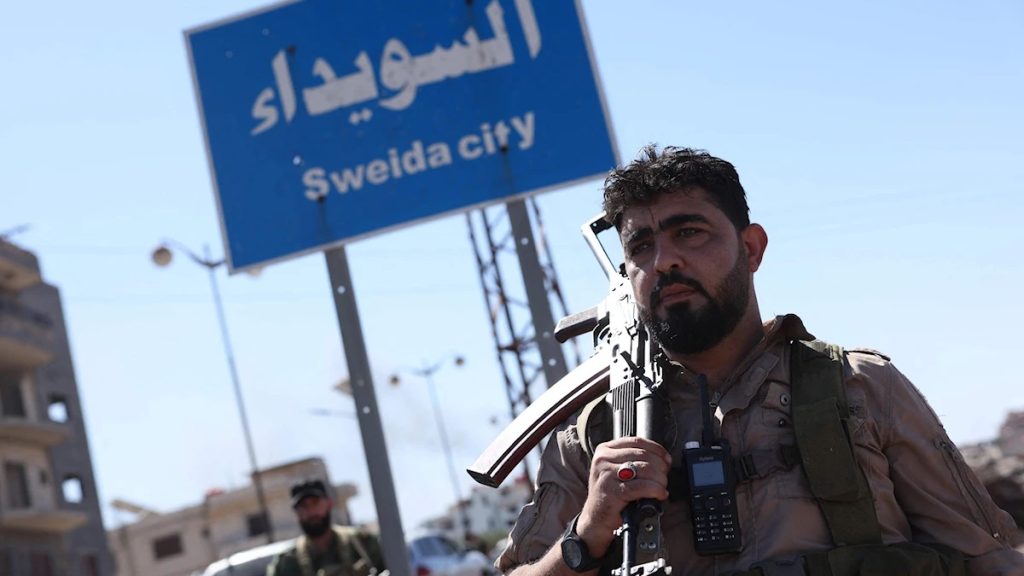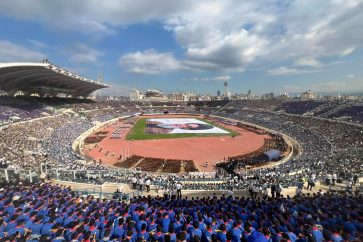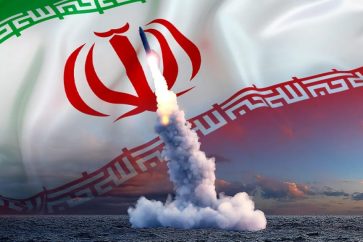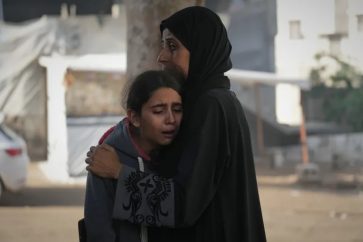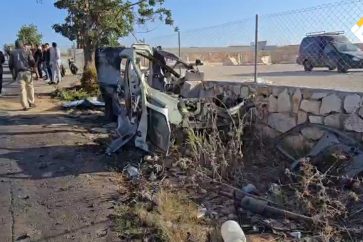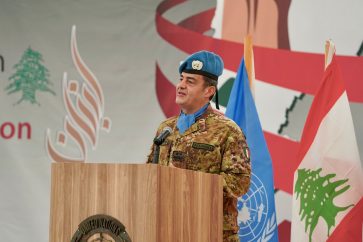Through the smoke rising from Sweida and the embers glowing along Syria’s coastline, the contours of a deeply fractured nation emerge. What’s unfolding in Syria today is not simply the latest chapter in a prolonged civil conflict. It is the manifestation of a more insidious transformation—one that is quietly redrawing national borders along sectarian lines, with “Israel” emerging as both sponsor and strategic beneficiary.
The bloodshed in Sweida last week revealed just how deep Syria’s internal fissures have become. In the span of mere days, more than a thousand people were killed in massacres, forced displacements, and a wave of violence that culminated in direct Israeli military intervention—ostensibly under the guise of “protecting the Druze.”
Israeli fighter jets went far beyond surveillance, striking high-value targets in Damascus, Sweida, and Daraa—including the Ministry of Defense and areas near the presidential palace—in what many interpreted as an unambiguous message: “Israel” will shape the battlefield if others won’t.
More startling still were reports of an Israeli armored unit crossing into southern Syria from the occupied Golan Heights, reaching the town of Qatana just 10 kilometers from Damascus. The move harkens back to the infamous “security belt” it previously carved out in South Lebanon in the 1980s.
Simultaneously, Prime Minister Benjamin Netanyahu revived the familiar rhetoric of ‘minority protection,’ citing an appeal from Sheikh Mowafaq Tarif, spiritual leader of the Druze in occupied Palestine. Netanyahu pledged that “Israel” would not permit threats to Druze communities in southern Syria.

Buffer Zone?
Between these public pronouncements and Israel’s open calls for disarming the region, a clearer picture is forming: the establishment of a buffer zone stretching from the Golan to Jabal al-Arab—offering security in exchange for de facto separatism.
Yet Sweida is hardly the only region spiraling toward fragmentation. In March, Syria’s Alawite-dominated coastal region witnessed horrifying sectarian violence that claimed nearly 1,700 civilian lives. According to rights groups and eyewitness accounts, regime-affiliated militias were implicated in mass executions, house-to-house raids, and the targeting of civilians based solely on sectarian identity.
Such incidents have revived a set of dangerous and familiar questions: Who is fueling these sectarian flames? Why now? And who stands to gain from expanding the arc of identity-driven violence?
These developments have resurrected long-standing fears that Syria is headed toward formal partition. The idea of dividing the country into sectarian cantons is not new—it surfaced early in the war, with references to a “Useful Syria” carved from Damascus to the coast. What’s new is how close this blueprint is to becoming reality. Syria’s military and institutional erosion, coupled with escalating foreign intervention, has turned theoretical fault lines into concrete frontiers.
Amid this fragmentation, international actors have rushed to broker ceasefires—particularly in the south—with Jordanian, American, and Syrian participation. While presented as humanitarian initiatives, these deals increasingly resemble efforts to solidify lines of control and reshape influence zones under the pretext of de-escalation.
Damascus’s ceasefire announcement, followed by statements from the Druze leadership and tribal authorities, merely codifies a fragile status quo—one easily undone by the next round of bloodletting.
“Protection of Druze Minority”
More troubling is the politicization of “minority protection.” The Israeli entity now casts itself as a guardian of the Druze. The United States issues boilerplate calls for accountability “on all sides.” Meanwhile, the world remains conspicuously silent on Gaza, where civilians endure collective punishment with impunity.
Such double standards expose the hollowness of the so-called international order. Humanitarian concern becomes a selective currency—granted or withheld based on geopolitical utility, not universal principle.
Syria’s unraveling is not an anomaly—it is part of a broader regional pattern. From Iraq’s Kurdish federalism to Libya’s dual governments, the Arab world has become a testing ground for the canton model. Again and again, sectarianism and identity politics are leveraged to dismantle states into manageable, faction-led enclaves.
For “Israel”, this represents a strategic windfall: fragmented neighbors are easier to manage, pose less of a threat, and can even become covert allies. A dismembered Syria with neutralized borders offers long-term security without the costs of war.
Israel has no allies in the region, only interests. It has no intention of protecting anyone in Syria or the region. In Sweida, as elsewhere, Israel’s sole objective is to exploit instability to advance its long-standing Yinon Plan: fragmenting surrounding nations into weak,… pic.twitter.com/chhD0E7PlE
— Marwa Osman || مروة عثمان (@Marwa__Osman) July 20, 2025
Every wave of violence chips away at the central idea of the Syrian state and emboldens the logic of internationally sanctioned cantons. These are not organic developments—they are methodically cultivated under the guise of humanitarianism, but in truth serve as instruments of regional redesign.
It’s worth noting that “Israel” DOES NOT PROTECT—it exploits. It builds strategic depth atop chaos, using collapse as cover for consolidation.
None of this is accidental. Syria’s sectarian unraveling is part of a rolling partition, orchestrated by foreign powers, executed by local proxies, and justified by hollow promises of safety. The real outcome is a Syria at risk of becoming a patchwork of warring sectarian fiefdoms, buried beneath the ruins of a once-sovereign state.
The dynamics unfolding in Syria are unlikely to remain entirely insulated. In a region where sectarian identities often intersect with political fault lines, the precedent of fragmented governance may take hold beyond Syrian territory. Neighboring countries with similarly intricate social fabrics—such as Lebanon—could find its internal balances increasingly sensitive to regional shifts. In such contexts, even minor disturbances risk amplifying underlying tensions, particularly when external interests are never far removed.
The central question remains: Can Syria, battered and bloodied, re-emerge as a unified state—or are we witnessing the irreversible birth of “Canton Syria,” a country by name only, divided by identity and ruled by foreign design?
Source: Al-Manar English Website

